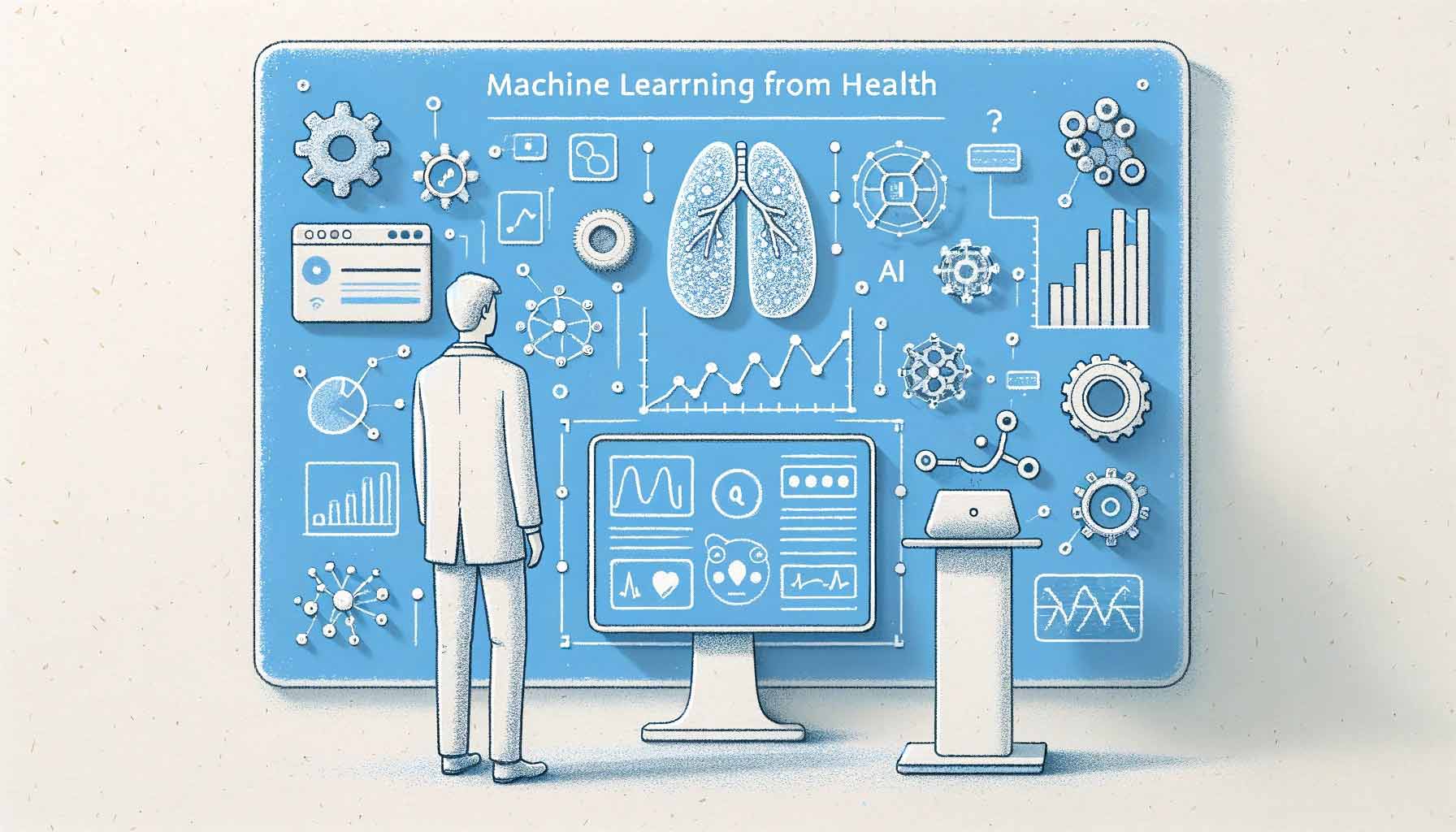1. Introduction
Machine learning (ML) is revolutionizing data analysis and interpretation, especially in health research. This mini-series will introduce the basics of machine learning, focusing on supervised and unsupervised learning methods and their applications in physical activity research using accelerometry.
Machine learning, a branch of artificial intelligence, allows computers to learn from data and make predictions or decisions. Instead of being explicitly programmed, ML algorithms use statistical techniques to identify patterns and relationships within data.
2. The Significance of Machine Learning in Health Research
Machine learning is particularly beneficial in health research due to its ability to process large and complex datasets. It enables researchers to:
- Uncover Patterns and Trends: Identify insights not easily visible through traditional statistical methods.
- Forecast Health Outcomes: Make predictions based on historical data.
- Tailor Health Interventions: Personalize interventions by analyzing individual behavior patterns.
Supervised and Unsupervised Learning:
- Supervised Learning: Involves training algorithms using labeled data, similar to teaching a child with flashcards showing both the problem and the solution.
- Unsupervised Learning: Involves analyzing unlabeled data to uncover hidden patterns, akin to giving a child mixed-up flashcards and asking them to sort them into groups independently.
3. Upcoming Articles in the Series
Applying Supervised Learning in Physical Activity Research:
- Overview and Methodology: Explanation of supervised learning.
- Practical Applications: Examples of how supervised learning is used to classify physical activities and predict health outcomes.
- Advantages and Limitations: Benefits and challenges of employing supervised learning.
Utilizing Unsupervised Learning in Physical Activity Research:
- Overview and Methodology: Explanation of unsupervised learning.
- Practical Applications: Examples of how unsupervised learning can identify clusters of activity patterns and detect anomalies.
- Advantages and Limitations: Benefits and challenges of employing unsupervised learning.
Comparing Supervised and Unsupervised Learning:
- Key Differences: Comparison of the two learning methods.
- Ideal Use Cases: Scenarios where each method is most effective.
- Combining Approaches: Hybrid methods that leverage both supervised and unsupervised learning for more robust analysis.
Practical Applications with Accelerometry Data:
- Real-World Examples: Studies utilizing supervised and unsupervised learning with accelerometer data.
- Technologies and Tools: Commonly used tools in these analyses.
- Future Trends: Advancements and future directions in the field.
4. Conclusion
Machine learning offers powerful tools for health researchers, enabling deeper insights and more accurate predictions. By understanding the basics of supervised and unsupervised learning, researchers can better utilize these technologies to improve health outcomes. Stay tuned for our next article, where we will explore supervised learning and its applications in physical activity research.
References
- Goodfellow, I., Bengio, Y., & Courville, A. (2016). Deep Learning. MIT Press. Link
- Bishop, C. M. (2006). Pattern Recognition and Machine Learning. Springer. Link
📅 If you are interested in learning more about our portfolio of products, such as the Fibion Device, Fibion Sleep, Fibion Mimove, Fibion Vitals, Fibion Emfit, Fibion Sens, and Fibion Circadian, all designed to assist in research measuring physical activity, sedentary behavior, and sleep, do not hesitate to book a video call with our expert Dr. Miriam Cabrita.

Frequently asked questions:
What is machine learning in the context of health research? +
Machine learning (ML) in health research refers to the use of AI algorithms that learn from data to make predictions or decisions. ML helps analyze large and complex datasets, uncover patterns, forecast health outcomes, and tailor health interventions.
How does machine learning benefit health research? +
Machine learning benefits health research by processing large datasets to uncover patterns and trends, make health outcome predictions, and personalize interventions. These capabilities enable more accurate and insightful data analysis.
What are supervised and unsupervised learning in machine learning? +
Supervised learning involves training algorithms with labeled data, where both the problem and the solution are provided. Unsupervised learning involves analyzing unlabeled data to discover hidden patterns, without pre-defined labels or solutions.
How is supervised learning applied in physical activity research? +
Supervised learning is applied in physical activity research to classify activities and predict health outcomes. Algorithms are trained with labeled data from accelerometers to recognize different types of physical activities and make accurate predictions.
What are the challenges of using unsupervised learning in health research? +
Challenges of using unsupervised learning in health research include the difficulty in interpreting the discovered patterns without labeled data and ensuring the reliability and accuracy of the insights derived from the analysis.
What future trends can we expect in machine learning for health research? +
Future trends in machine learning for health research include the development of more advanced algorithms, the integration of hybrid approaches combining supervised and unsupervised learning, and the use of increasingly complex datasets to provide deeper insights into health outcomes.















